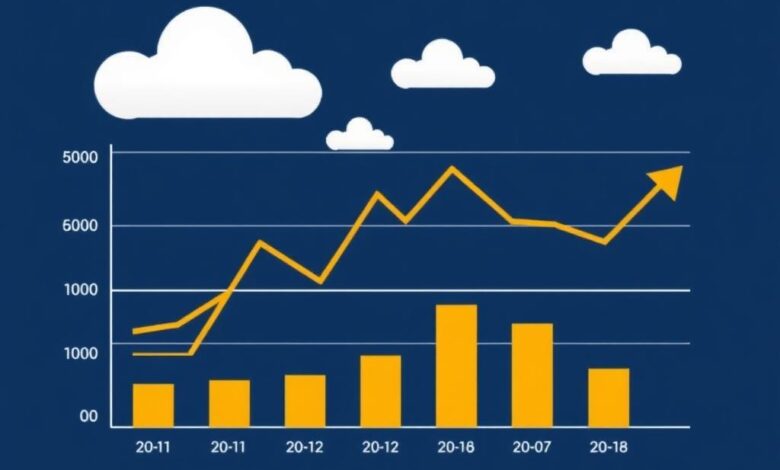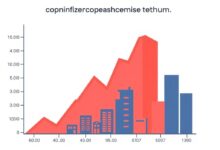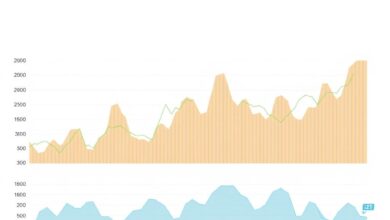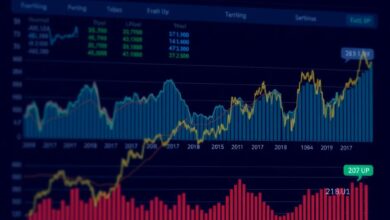Investing in collectibles – profitable or risky?

Acquiring rare items such as vintage watches and fine art can yield significant returns, but it also invites substantial uncertainty. The market for these unique pieces often hinges on trends and collector sentiment, making it crucial to stay informed about current valuations and emerging interests.
Watches, particularly those from prestigious brands, have shown remarkable appreciation over time. Limited editions or discontinued models frequently fetch prices far beyond their original retail value. Engaging with watch communities and following auction results can provide insights into which pieces are gaining traction among enthusiasts.
Art serves as another compelling avenue for potential financial gain. Works by established artists typically appreciate steadily; however, the speculative nature of contemporary art poses risks. Understanding an artist’s market position and the broader cultural context is essential for making informed decisions in this space.
Ultimately, whether one finds success in this field depends on a blend of knowledge, timing, and a keen sense of market dynamics. Keeping abreast of industry news and participating in relevant forums will enhance one’s ability to navigate this complex landscape effectively.
Investing in Collectibles: Is It Profitable or Risky?
Engaging in the market of rare items can yield high returns, yet it demands a keen understanding of speculation. Focus on specific categories like art and vintage watches, where historical significance often drives value appreciation. Research auction results and market trends to identify potential opportunities.
Art pieces by renowned artists tend to appreciate over time, but authenticity is paramount. Acquire only verified works to avoid pitfalls associated with counterfeits. Similarly, vintage watches from prestigious brands have shown remarkable price growth; however, ensure proper documentation and provenance are available for any acquisition.
Market fluctuations can impact these assets significantly; therefore, diversifying your portfolio across different types of collectibles may mitigate risks. Look into emerging trends within the collectible sector as well–certain niche markets can offer unexpected value increases.
Lastly, be prepared for long holding periods. Unlike traditional investments, the liquidity of collectibles can vary widely. A well-informed strategy that combines passion with analytical insight will lead to a more rewarding experience in this intriguing investment avenue.
Understanding Market Trends
Monitor auction results for rare items like watches to gauge current market demand. Analyzing recent sales can reveal shifts in value that may not be apparent from historical data alone.
Pay attention to social media and online forums where collectors discuss trends. These platforms often highlight upcoming fads or declining interests, offering insights into potential speculation opportunities.
Consider the rarity and condition of specific pieces; these factors significantly influence their market performance. For instance, limited editions or those with unique features tend to appreciate more rapidly than mass-produced counterparts.
Stay informed about economic indicators that affect discretionary spending. A robust economy typically boosts interest in luxury items, while downturns can lead to a decrease in collectible values.
Network with industry experts and attend trade shows to gain firsthand knowledge about market dynamics. Engaging with seasoned collectors can provide valuable intel on which categories are currently thriving.
Utilize online marketplaces and auction sites to track price fluctuations over time. This data can serve as a barometer for making informed decisions about future acquisitions or sales.
Lastly, remain skeptical of hype-driven narratives surrounding certain collectibles. Speculation can inflate values temporarily, but sustainable growth is rooted in genuine demand and collector interest.
Evaluating Investment Potential
Focus on the rarity and historical significance of items, such as vintage watches or classic art pieces. The demand for these assets often correlates with their unique attributes and provenance. Research auction results and sales data to understand current market valuations.
Examine the condition of each piece meticulously; wear and tear can drastically reduce value. Invest in items with documented authenticity to minimize speculation risks. Engage with experts who can provide insights on emerging trends and potential future values.
Stay informed about cultural shifts that may influence desirability, particularly in sectors like luxury watches or contemporary art. Tracking social media discussions and collectors’ forums can reveal upcoming interests before they become mainstream.
Consider diversifying your portfolio by including different types of collectibles. This strategy can help mitigate losses should one segment experience a downturn. Always assess your risk tolerance and investment horizon when entering this market.
Identifying Authenticity Risks
Verify provenance before acquiring any item, especially in art and watches. Look for credible documentation that traces the history of ownership. Items lacking clear origin may be significantly devalued or deemed counterfeit.
Utilize expert appraisals to assess authenticity. Engaging professionals who specialize in specific categories can uncover hidden flaws or discrepancies that are not apparent to untrained eyes.
Examine details meticulously. In artwork, inspect signatures, materials, and techniques; in timepieces, focus on serial numbers and manufacturer stamps. Counterfeiters often miss these subtleties.
Research market trends related to specific items. Knowledge about recent sales and auction results can provide insights into what constitutes a genuine piece versus a fraudulent one.
Be cautious of speculative purchases where value is driven more by hype than substantiated worth. This can lead to acquiring items that may not hold their supposed significance over time.
Engage with communities and forums dedicated to your area of interest. Networking with seasoned collectors can expose you to red flags and enhance your understanding of authentic versus fake items.
Lastly, consider third-party certification for high-value pieces. Certificates from recognized authorities can add reassurance but verify the issuing body’s credibility as well.
Diversifying Your Collection
Consider incorporating a mix of assets such as vintage watches, fine art, and rare coins to enhance the overall worth of your holdings. Each category offers distinct appreciation potential and market dynamics, reducing dependency on any single item or type.
Watches, for instance, have demonstrated robust growth in value, particularly limited editions from renowned brands. Monitor auction results and sales trends to identify which models are experiencing heightened interest and price surges.
Art can be equally rewarding. Focus on emerging artists alongside established names to balance your portfolio. Research the artist’s background and previous sales to make informed choices. Engage with local galleries or attend art fairs for insights into upcoming talent that might yield high returns.
Speculation plays a role in both categories; however, grounding decisions in research rather than hype will lead to more stable investments. Keep an eye on market fluctuations and seasonal trends that could affect demand.
Integrating diverse types of assets not only mitigates risk but also enriches your experience as a collector. Regularly reassess your collection’s composition to ensure it aligns with changing market conditions and personal interests.
Strategies for Selling Collectibles
To maximize returns on rare items, consider the following tactics:
- Research Pricing: Analyze recent sales of similar art and watches to establish a competitive price point. Utilize online auction platforms and collector forums for insights.
- High-Quality Presentation: Invest time in photographing pieces with professional lighting and backgrounds. Showcase intricate details that highlight their value.
- Engage with Communities: Connect with fellow collectors through social media groups or local clubs. Sharing knowledge can lead to potential buyers who appreciate the items’ uniqueness.
- Timing the Market: Monitor market trends closely. Certain periods may yield higher demand, especially around major auctions or collector events.
- Create Detailed Listings: Provide comprehensive descriptions, including provenance and condition reports. Transparency builds trust with prospective buyers.
In addition, consider these approaches to enhance visibility:
- Diversified Sales Channels: List items across multiple platforms such as eBay, specialized auction houses, and collectible marketplaces to reach a broader audience.
- Auction Strategy: For high-value pieces, consider auctioning them. Bidding wars can significantly increase final sale prices.
- Email Marketing: Build a mailing list of interested buyers and inform them about available rare items or upcoming sales events.
Finally, ensure authenticity by providing certificates or appraisals from recognized experts. This reassures buyers about the true value of your art and watches.







